Examples
This page documents some of my projects, giving links to the demo sites and source code where appropriate.
Biome Builder
C#UnityMy itch profile is full of prototypes from gamejams, learning many techniques of game development along the way.
The culmination of these learnings is a feature rich, but basic rhythm game, where different biomes are constructed if the beat is hit on time. There are translated voiceovers, dynamic sound achieved via FMOD, post processing and 3d effects, demonstrating what a final game might look like.
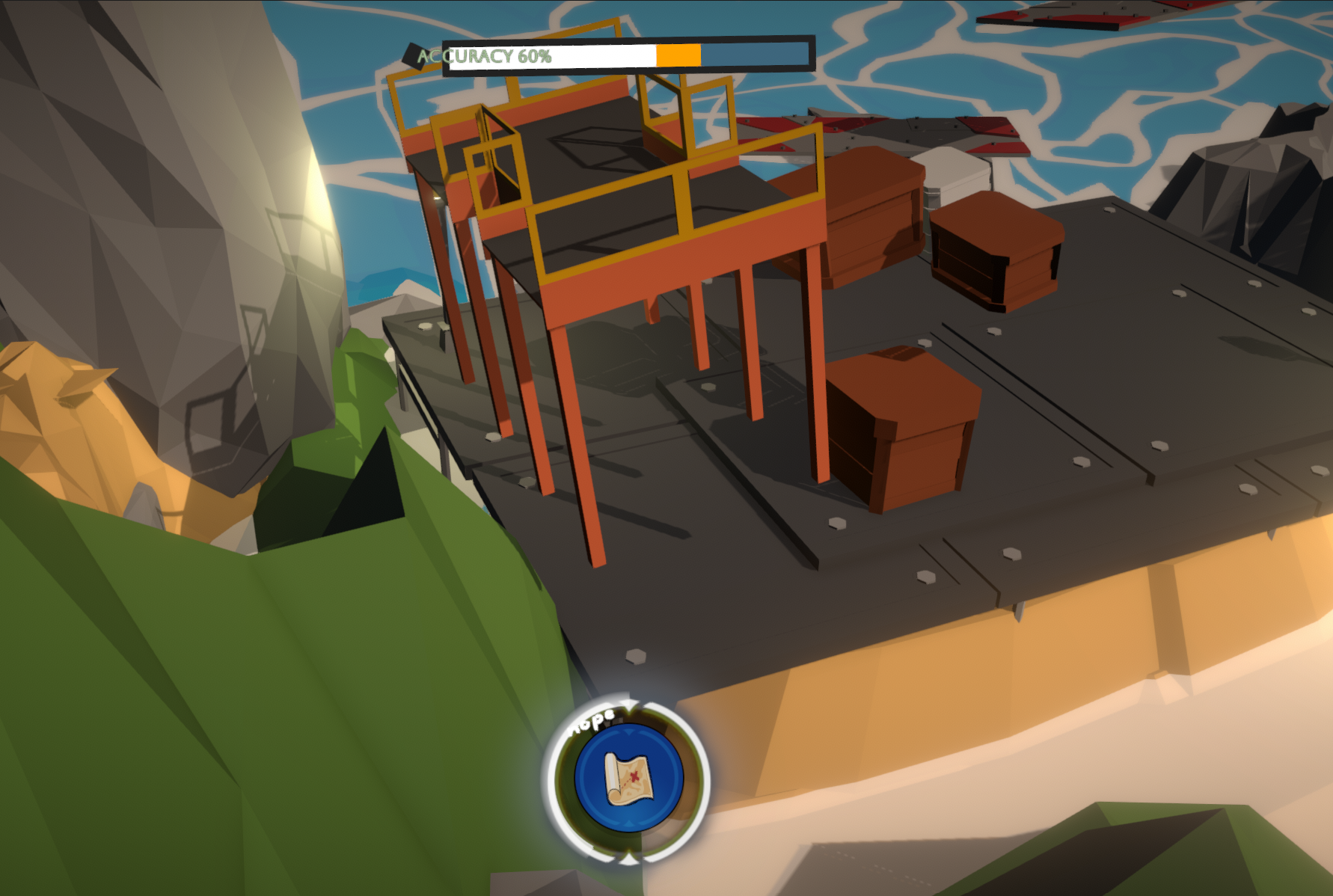
I take a lot of inspiration from the game development process and industry, the trends and techniques applied can often be applied to the software development lifecycle, but typically live even closer to the bone.
Dobble clone
ReactTypescriptDobble is a fast paced simple matching game, and is great to play in different languages. Now I have it always available on website!
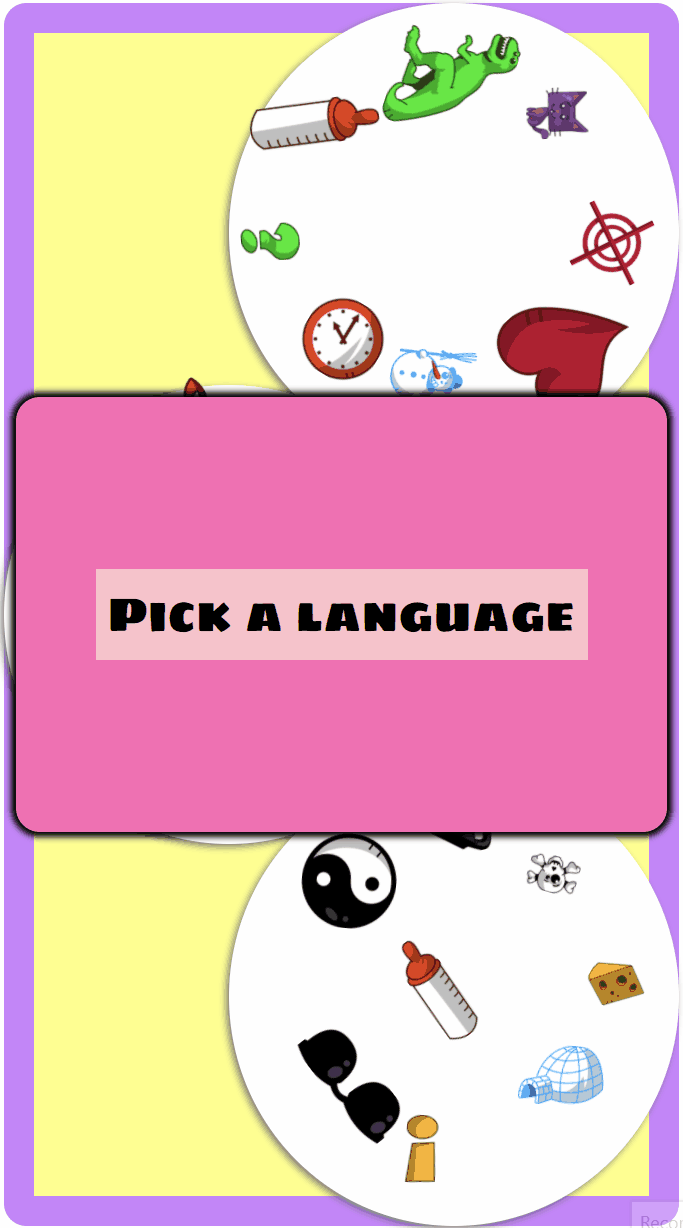
The goal of this project was to see what I could get done in just a couple of evenings, starting from nothing, to a hosted, designed and functional website. The source covers global state with React context, as well as using React Hooks and an easy to understand component hierarchy.
Industrialist
GoKafkaNativeScriptDockerA mixed real-time/turn-based game with custom assets and scalable architecture
After hearing lots about Native development, I was curious to find out how hard it would be to transfer my web skills into native development. I took the plunge with NativeScript and NativeScript Vue. Whilst there is a core following, it's difficult to recommend this for a project of this scope, which dealt with many custom requirements. For a proof of concept, I would happily return to NativeScript. However, other alternatives like React Native, Flutter and Ionic do seem to have more of a following.
The second interesting part was writing the websocket API inside of Go which was, as promised, really easy and enjoyable. I would seriously consider using Go for future project work, although mocking some interfaces for testing from 3rd party plugins was not easy.

Currently available only to select users on the Google Play store - if you're interested in testing, let me know!
Mental Health Tracker
SvelteTypescriptThe Corona times haven't been easy for anyone, and I've long believed my own mental health boils down to just 4 topics: exercise, sleep, social and food. I thought it'd be a good idea to track these over time, to monitor if my mood could be boosted by improving any of these key metrics.
I found the animations and reactivity super easy to deal with, as well as easy Typescript integration, and would be happy to work with it on a bigger project.
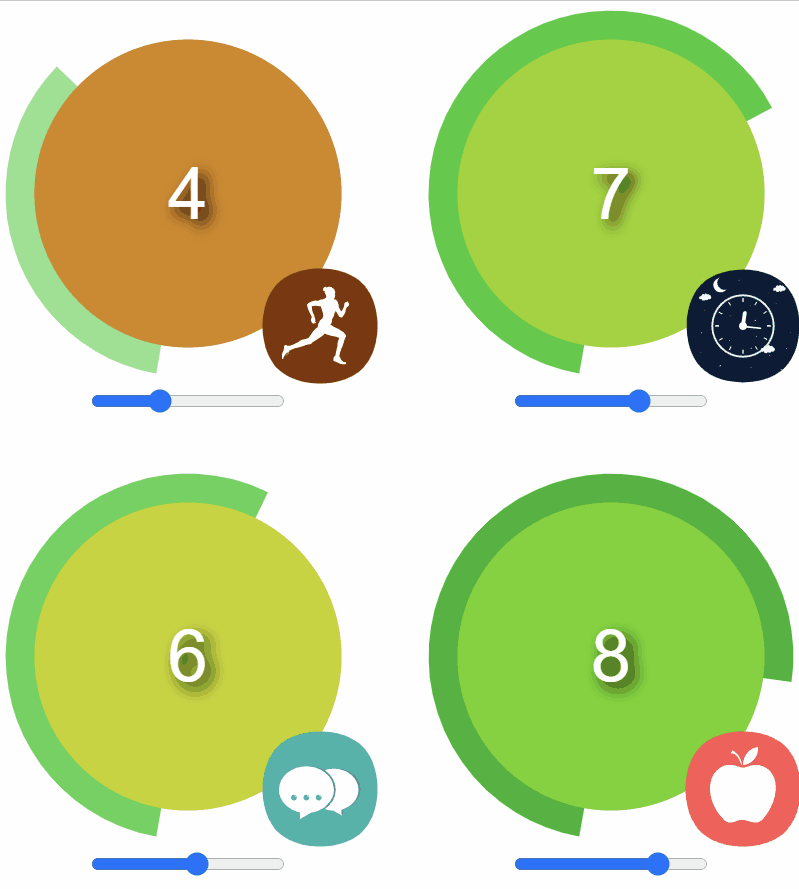
Have a play on your local machine and check out the source code.
Sprint roles
GraphQLReactNode.jsMongoDBMongooseExpressD3.jsHave you ever started on a project that was half way through its 10th sprint, and there are 20 people doing a mix of roles? I find myself asking,
- Who does what?
- Who talks to who?
- How is this different to my last project?
- What gap is there for me to fill?
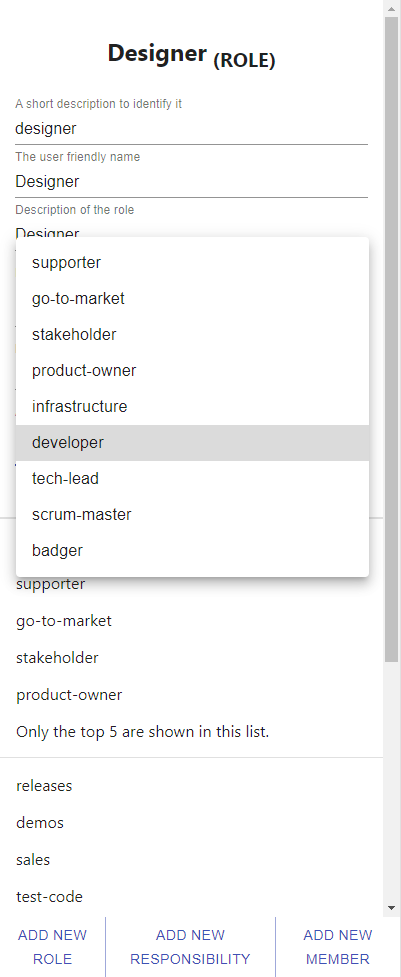
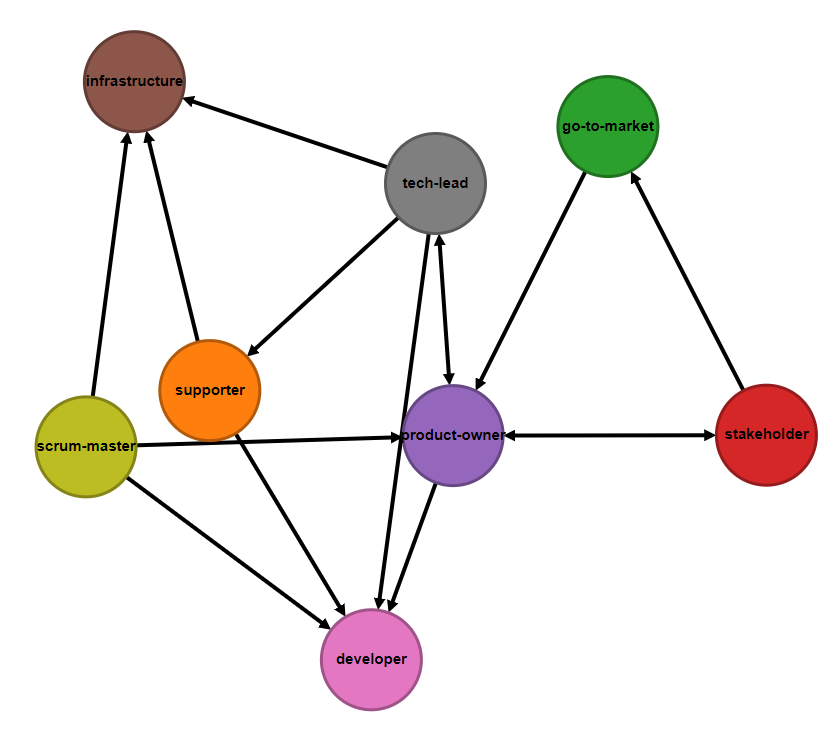
This project was a chance to play with different technologies, but also provide a visual and interactive interface to make the above questions less frustrating.
You can see a live version or checkout the source code. It's a hobby tier herokuapp, so allow a minute on first load while the underlying container becomes active.

Features
- Add/delete/edit the roles/members/responsibilities in a project
- Assign names and responsibilities to those roles
- Link roles together to indicate a relationship
- Persist to a database
- Initialise with a default config
Vue nav-wheel
Vue.jsD3.jsVue Test UtilsAre you bored of the typical navbar, with inaccessible hover-overs and covering half the screen? I wanted a navigation option that could pop up as a modal, with large buttons to navigate through a website, in a novel way.
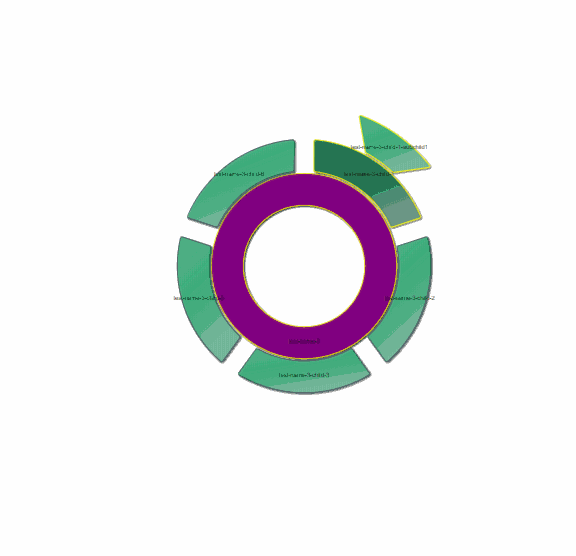
The result is a package on npm, which takes an existing vue-router config and renders it in a radial and recursive way, with a number of configurable options both for function and style. Here's the source code.
Stylistic design isn't my strength, so I wanted the styling and the look and feel to be configurable in case someone wants to build on the idea. The typical apps I develop have significant domain logic and complex pure JavaScript logic, and as a result there sometimes isn't scope for a creative SVG implementation.
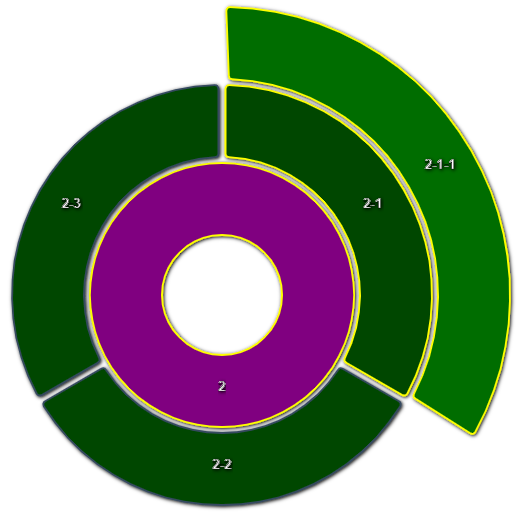

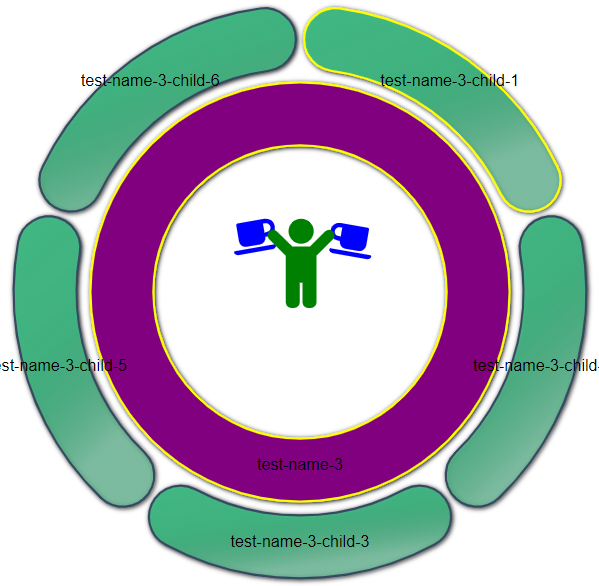
Integrating with D3-shape and handling the reactivity of SVG elements in Vue surprised me with how little trouble I had. The unit testing of SVG Vue components did turn out to be fiddly in some parts, but was also mostly fine.
Features
- An SVG viewport that renders a vue-router config
- Conditional shows routes depending on
- Adjusts the shape and size of routes depending on context and config
- Interactive look and feel
- Highly customisable and stylable, using BEM notation
- Plug and play in a standard Vue way
English4all administration
Vue.jsNode.jsMongoDBMongooseExpressDockerThe charity I've been involved with for 2.5 years was sufferring from a lack of traceability, manual processes, and paper usage. With a small budget and an environmental conscience, I wanted to build something that would help make scheduling classes easier, reducing the scurry on a Friday night to prepare for the Saturday morning.
The catch: 0 budget.
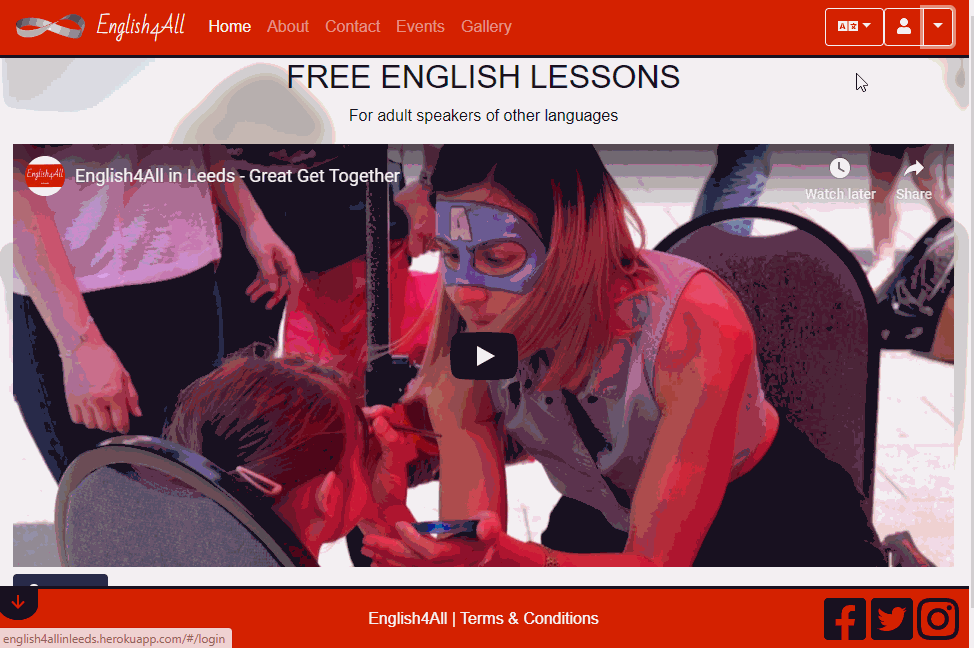
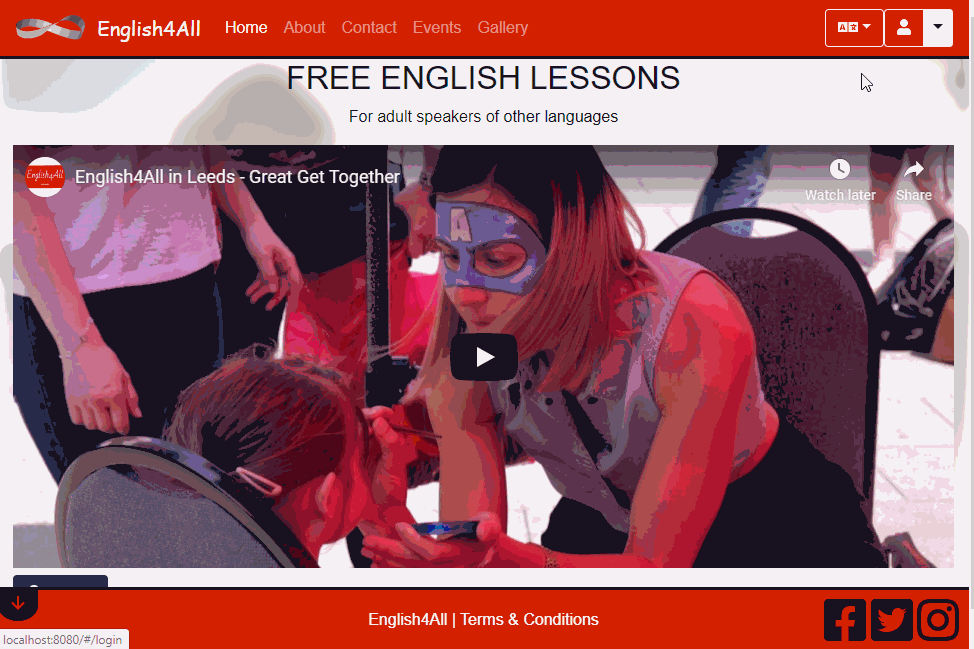
As a hobby project for a small charity, and its intent being to flex my programming muscles on the side, I was most interested in having a tool to save me time that wouldn't cost anything to host.
There aren't many lessons to be learned on UI/UX here, but the server + infrastructure architecture and mapping domain logic from start to finish was valuable experience.
We use this as an internal tool now, which will become unsupported in the coming months. For now, no source, only the active site.
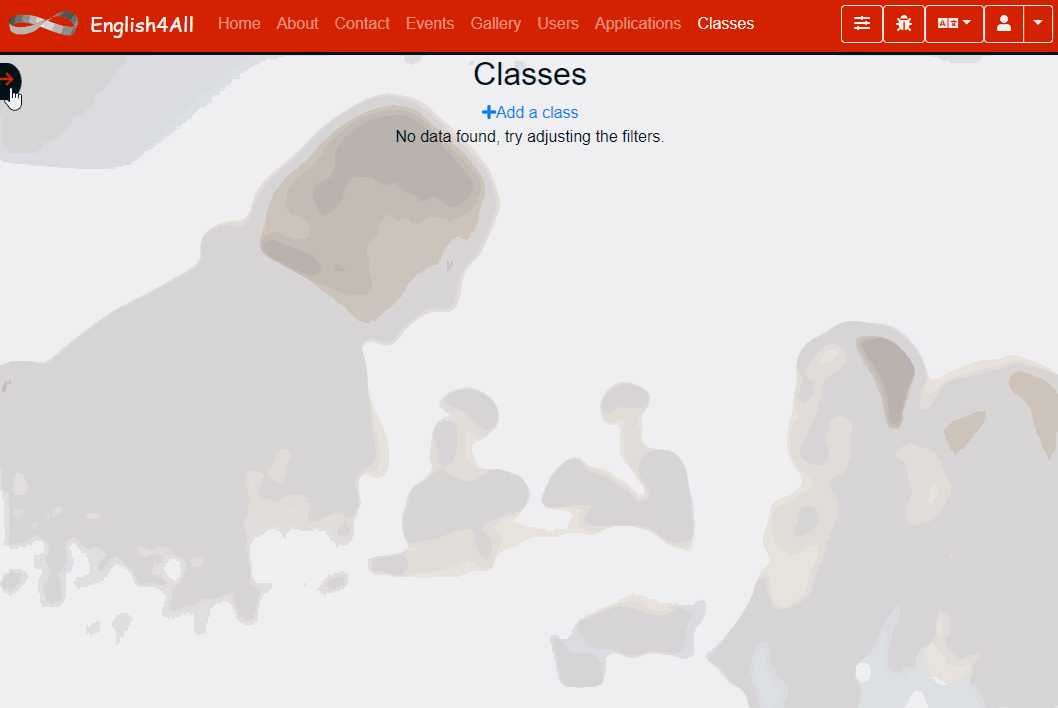
The result is a full featured app allowing administrators to organise, log and track student/volunteer progress as they attend various classes throughout the year.
Features
- Social login
- Form registration
- Custom permissions
- Combinatorial and interoperable filtering
- Email support via SendGrid
- Google maps integration
- Translation support
- Cloudinary integration for downloading/uploading images
Other
A lot of the fun stuff I've worked on is behind closed doors. In reality, I spend most of my day scoping requirements, focusing on our development methodology and supporting the deployment and maintenance of a number of interesting projects.
Some smaller projects you might like to ask me about, outside of the day to day:
- A collaborative foray into game development with Unity
- Sever-side rendered Pokédex
- Machine learning in the browser and storing models in Mongo